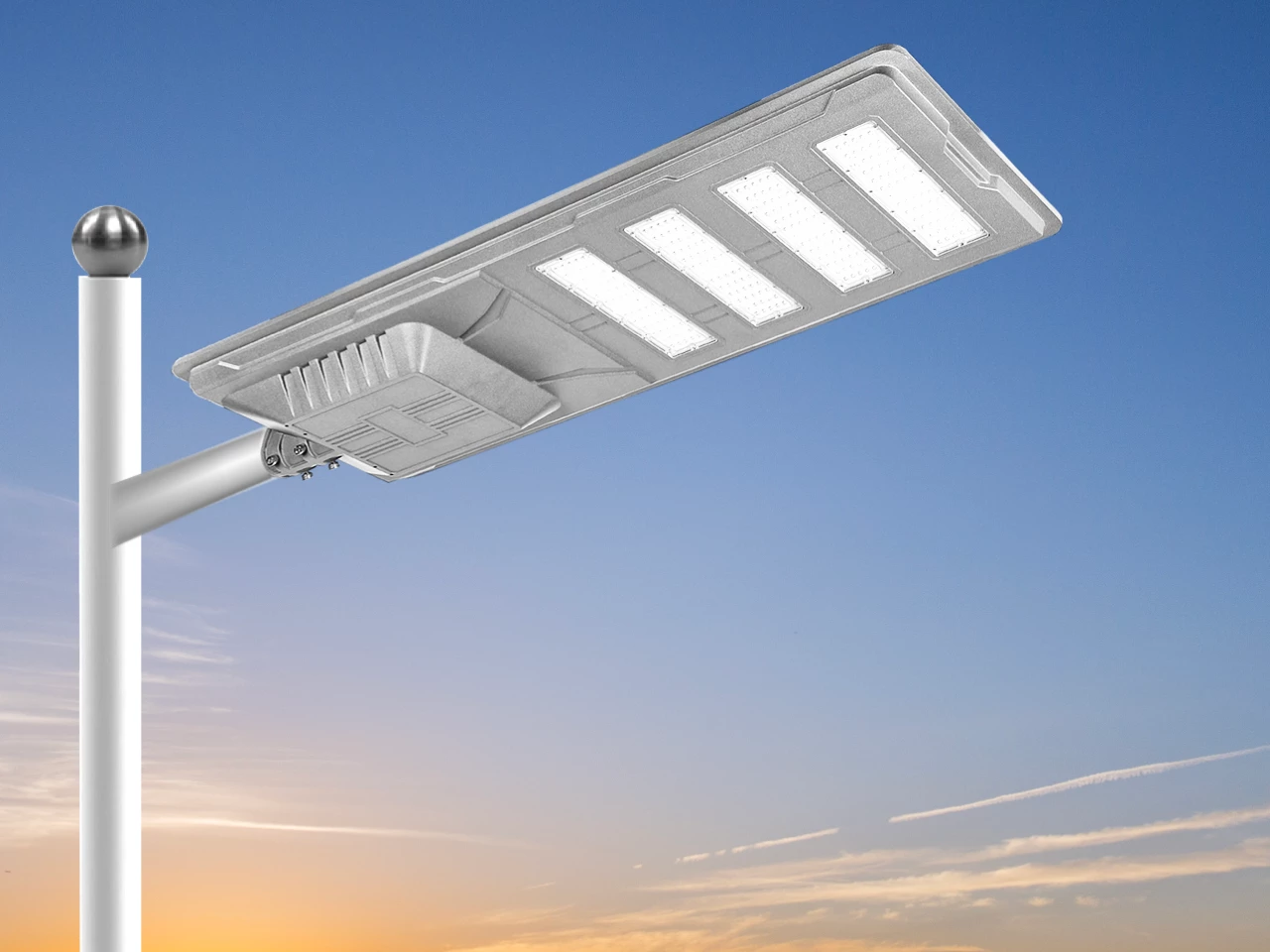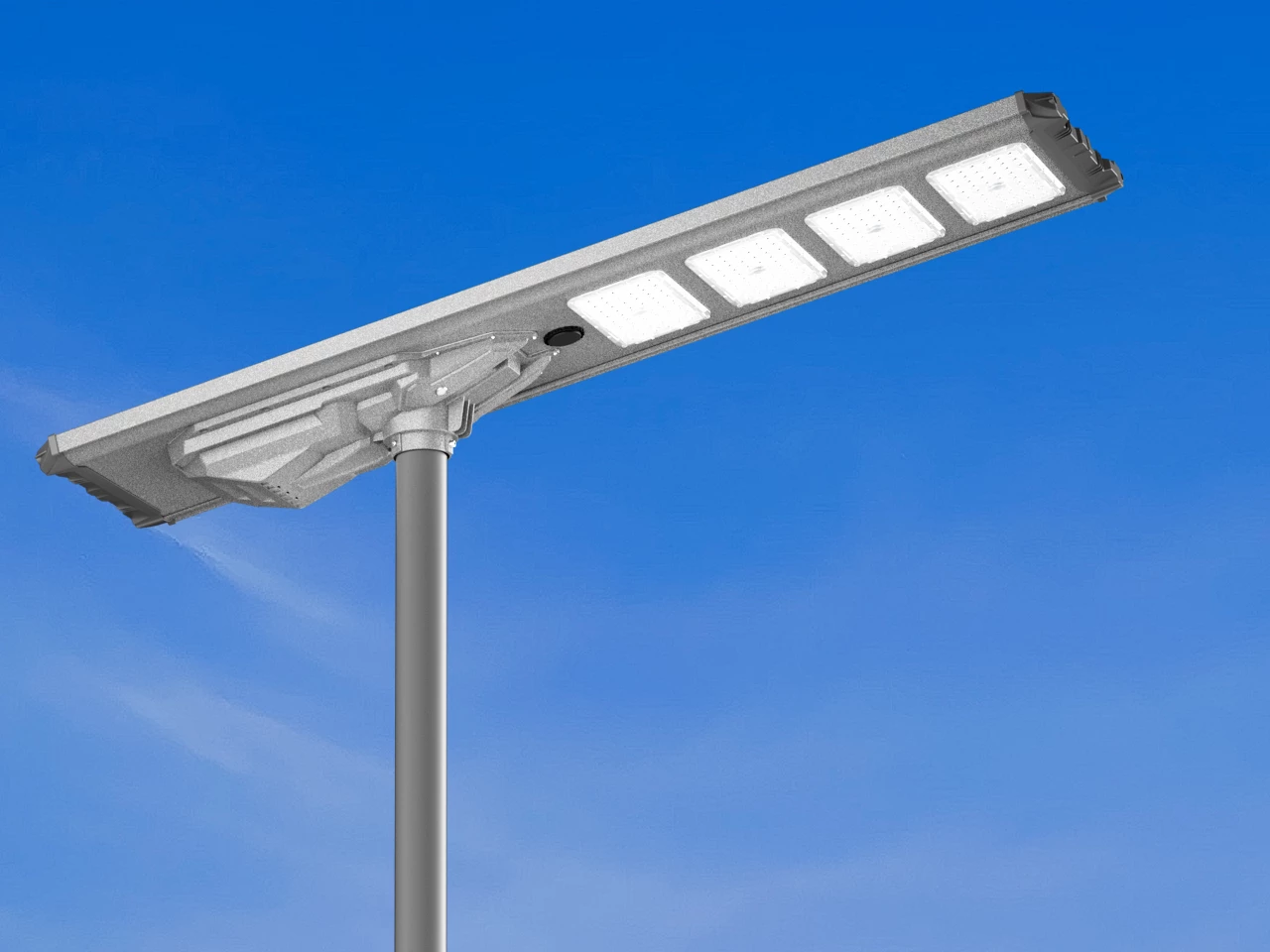How Is Wind Resistance Calculated for Solar Street Lights?
Discover how wind resistance is calculated for solar street lights and why it's critical for pole and panel stability. Learn about wind load formulas, factors, and safety standards in solar lighting engineering.
Wind resistance is a crucial factor in the structural design and safety of solar street lights. Since these lights are exposed to outdoor conditions year-round, their poles, solar panels, and fixtures must withstand high wind forces — especially in coastal, mountainous, or hurricane-prone areas.

Why Wind Resistance Matters
- Safety: Prevents pole collapse or bending under strong winds
- Durability: Increases the service life of the lighting system
- Compliance: Meets local construction codes and standards
- Accurate Design: Helps determine the right pole thickness, foundation depth, and solar panel angle
Wind Load Calculation Formula
The general formula for calculating wind load is:
F = P × A × Cd- F = Wind force (Newtons)
- P = Wind pressure (N/m²)
- A = Projected area exposed to wind (m²)
- Cd = Drag coefficient (typically 1.2–2.0)
Wind pressure is calculated as:
P = 0.613 × V²- V = Wind speed (m/s)
Example Calculation
If wind speed is 35 m/s, the solar panel area is 1.5 m², and the drag coefficient is 1.5:
Wind Pressure: 0.613 × 35² = 751 N/m²
Wind Load: 751 × 1.5 × 1.5 = 1,690 N
Factors That Affect Wind Resistance
- Height of the pole
- Material and thickness of the pole
- Panel size and mounting angle
- Installation location (open field, coastal area, rooftop)
- Shape of the light and pole (round tapered poles reduce drag)
Design Standards
Wind resistance should comply with local building codes and safety standards such as:
- ASCE 7 (USA)
- IS 875 Part 3 (India)
- EN 1991-1-4 (Europe)
Improving Wind Resistance
- Use tapered or octagonal poles
- Reduce panel tilt angle
- Install wind-resistant LED fixtures
- Reinforce foundation with concrete and anchor bolts
Professional Design Support
At Guangdong Queneng Lighting Technology Co., Ltd., we use advanced CAD structural simulations and wind load testing to ensure all our solar street light systems are built to endure. Our engineering team tailors designs based on local climate conditions to provide safe, durable, and efficient lighting solutions.

FAQ
Q1: What wind speed can typical solar street lights withstand?
A: Most commercial systems are designed to resist wind speeds between 100–150 km/h (62–93 mph).
Q2: Do solar panels increase wind resistance?
A: Yes. The larger the panel and the steeper the angle, the more wind resistance it creates.
Q3: Can wind resistance be improved without thicker poles?
A: Yes. Using streamlined fixtures, lower panel angles, and a stronger foundation can help.
Q4: What happens if wind load exceeds the design limit?
A: It can lead to structural failure such as pole bending or panel detachment, which poses safety risks.
Q5: Are there official standards for wind resistance testing?
A: Yes, including ASCE 7, IS 875 Part 3, and EN 1991-1-4 depending on your country.

Have more questions about our products or services?
The latest hot news you might like

Discover how solar panels power street lights, exploring the technology behind solar energy conversion, storage systems, and how solar-powered street lights are revolutionizing urban and rural lighting solutions.

Learn how AC Solar Hybrid Street Lights work, their advantages, disadvantages, system behavior in low-sunlight conditions, and why hybrid technology is ideal for regions with unstable sunlight.

Municipalities around the world are increasingly adopting solar-powered streetlights as part of their urban development strategies. Rising energy costs, the need for sustainable infrastructure, and government green initiatives are driving cities to switch from traditional street lighting to advanced LED solar streetlights.
Queneng Lighting provides municipalities with cost-effective, energy-efficient, and durable solar lighting solutions, ensuring safe and sustainable public spaces.

In recent years, the purchase of solar streetlights for municipalities has become a growing trend across the globe. Local governments are under pressure to reduce public expenditure, promote green energy, and create safer communities. Solar streetlights provide a reliable, cost-effective, and sustainable solution that meets these needs. Queneng Lighting, as a leading solar street lighting manufacturer, has supported multiple municipal projects worldwide with customized and energy-efficient solutions.
FAQ
Solar Street Light Chuanqi
How do the solar panels in Chuanqi street lights store energy?
The solar panels in Chuanqi solar street lights collect sunlight during the day and convert it into electrical energy, which is stored in high-capacity lithium-ion batteries. The stored energy is then used to power the LED lights at night, ensuring continuous illumination even when the sun is not shining. This energy storage system ensures the lights work autonomously without relying on an external power source.
Tourist Attractions and Resorts
Are solar lights bright enough for outdoor areas at night?
Yes, solar lights are designed to provide adequate brightness for outdoor areas such as pathways, gardens, and parking lots. Advanced solar technology ensures they provide sufficient lighting for safety and ambiance.
Municipal and Public Infrastructure
Can the lights be customized for specific municipal projects?
Yes, we offer tailored solutions to meet the unique requirements of different projects, including variations in design, brightness, height, and operation modes.
What happens if the battery runs out of charge?
Our solar streetlights use advanced battery management systems to optimize energy usage. Even during prolonged cloudy or rainy periods, the lights can function at reduced brightness to conserve energy.
Sustainability
How should I maintain solar street lights for optimal performance?
To ensure optimal performance, we recommend cleaning and inspecting the lights every 6–12 months. Regularly cleaning the photovoltaic panels, checking the battery health, and confirming the integrity of the lights and control systems are essential for long-term reliable operation.
Battery Performance and Testing
What is an impact test?

Queneng's Luzhou Solar Street Light provides sustainable, energy-efficient outdoor LED lighting. Powered by solar energy, it's a cost-effective and eco-friendly solution for illuminating streets and pathways. A reliable and durable LED solar street light.

Introducing the Luqing Solar Street Light by Queneng, Efficient LED lighting powered by solar energy is perfect for illuminating outdoor areas. Harness the power of solar energy for sustainable, reliable street lighting. Ideal for eco-friendly, cost-effective outdoor illumination solutions.
If you would like more information about Queneng solar lighting solutions, please send us a message by filling out the form below. Our professional team will get back to you within 24 hours!
Rest assured that your privacy is important to us, and all information provided will be handled with the utmost confidentiality.
Schedule a Meeting

Book a date and time that is convenient for you and conduct the session in advance.
Have more questions about our products or services?



















